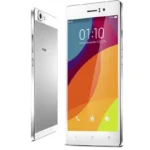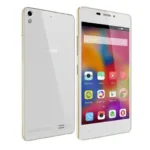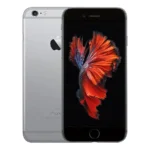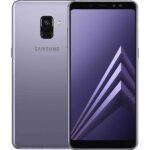In today’s fast-paced world, where we rely on smartphones, tablets, laptops, and other portable devices for work, entertainment, and communication, staying charged on the go is essential. This is where power banks come into play. These portable charging devices have become a must-have accessory for anyone who needs to ensure their devices stay powered up throughout the day. In this guide, we’ll take a closer look at power banks, how they work, and how to choose the best one for your needs.
What is a Power Bank?
A power bank is a portable, rechargeable battery that allows you to charge your electronic devices when you’re away from a power source. It stores electrical energy, which can be used to recharge devices like smartphones, tablets, Bluetooth speakers, and even laptops. Power banks come in various sizes, capacities, and features, offering convenience and flexibility for users who need to keep their devices running throughout the day.
How Do Power Banks Work?
Power banks function as external batteries that store electrical energy for later use. Here’s how they work:
- Charging the Power Bank: First, you need to charge the power bank itself. You do this by plugging it into a power source (like a wall outlet, laptop, or USB charger). The power bank stores energy in its internal battery.
- Using the Power Bank to Charge Devices: When your device (such as a smartphone) runs low on battery, you can connect it to the power bank via a USB cable. The power bank will then transfer the stored energy to your device, charging it up until it’s fully powered or until the power bank runs out of charge.
- Recharging the Power Bank: Once the power bank has drained its stored energy, you simply plug it back in to recharge it for the next use. Most power banks can be recharged hundreds or even thousands of times before they start to lose their efficiency.
Types of Power Banks
There are several types of power banks available, each designed for specific use cases. Here’s an overview of the most common types:
1. Standard Power Banks
Standard power banks are the most common and come in various sizes and capacities. They can charge a range of devices like smartphones, tablets, and other USB-powered electronics. These power banks typically have multiple USB ports, allowing you to charge multiple devices simultaneously.
- Capacity: These can range from 2,000mAh to 30,000mAh or more, depending on the model.
- Use Case: Ideal for everyday use, traveling, or when you need to charge your phone while on the go.
2. Laptop Power Banks
Laptop power banks are larger and more powerful than standard ones. They are specifically designed to charge laptops, which require more power than smartphones or tablets.
- Capacity: These typically start from 20,000mAh and can go up to 50,000mAh or more.
- Use Case: Great for travelers, business professionals, or anyone who needs to charge their laptop on the go.
3. Solar Power Banks
Solar power banks come with built-in solar panels that allow you to charge the device using solar energy. These are ideal for outdoor enthusiasts or anyone who spends time in places where access to electricity is limited.
- Capacity: Varies from 5,000mAh to 20,000mAh, depending on the solar panel size.
- Use Case: Perfect for camping, hiking, or traveling in areas without access to conventional power sources.
4. Portable Wireless Power Banks
These power banks have wireless charging capabilities, allowing you to charge compatible devices without needing a USB cable. Simply place your wireless-enabled device on the power bank’s charging pad, and it will charge automatically.
- Capacity: Usually ranges from 5,000mAh to 10,000mAh.
- Use Case: Ideal for people who prefer a cable-free charging experience.
5. Multi-Output Power Banks
Multi-output power banks are designed to support charging several devices at once. They come with multiple ports (USB-A, USB-C, etc.), allowing you to charge your phone, tablet, smartwatch, and other devices simultaneously.
- Capacity: Varies widely, typically between 10,000mAh and 30,000mAh.
- Use Case: Useful for families, group travel, or anyone who needs to charge multiple devices at the same time.
Key Features to Consider When Choosing a Power Bank
When selecting a power bank, several factors determine how well it will meet your needs. Here are the key features to consider:
1. Battery Capacity (mAh)
The capacity of a power bank is measured in milliampere-hours (mAh), and it determines how much charge it can store. The higher the mAh, the more power the bank can store, which means it can charge your devices more times or for a longer duration.
- For Smartphones: A 10,000mAh power bank can typically charge a modern smartphone 2-3 times before needing a recharge.
- For Tablets: Tablets generally require more power, so a 15,000mAh or higher capacity is ideal for multiple charges.
2. Output Power (Wattage or Voltage)
The output power (measured in watts or volts) determines how quickly the power bank can charge your devices. A higher output means faster charging. Look for power banks that support fast charging if you need a quick recharge.
- USB-C Power Delivery (PD): Power banks that support USB-C PD offer faster charging speeds for compatible devices.
- Quick Charge (QC): Devices that support Qualcomm’s Quick Charge technology can be charged faster using a power bank with QC support.
3. Size and Portability
If you plan on carrying the power bank around, consider its size and weight. Larger capacity power banks tend to be bulkier and heavier. Look for a balance between capacity and portability that fits your needs.
- Compact Power Banks: Ideal for casual use and people who need a lightweight option to charge smartphones.
- Larger Power Banks: Best for charging laptops or multiple devices but can be bulkier to carry.
4. Number of Ports
If you have several devices to charge at once, consider a power bank with multiple USB ports. Some models offer up to four ports, allowing you to charge multiple devices simultaneously.
- USB-A Ports: Traditional USB ports for charging older devices.
- USB-C Ports: Newer, faster charging ports that are becoming standard in many modern devices.
- Wireless Charging: Some power banks support wireless charging for added convenience.
5. Charging Speed
If you’re in a hurry, choose a power bank that offers fast charging capabilities. Look for models with Quick Charge or USB Power Delivery (USB-PD) technology, which allows for faster transfer of power.
6. Safety Features
Safety is crucial when dealing with rechargeable batteries. Look for power banks that include built-in safety features such as:
- Overcharge protection
- Overcurrent protection
- Short-circuit protection
- Temperature regulation
7. Additional Features
Some power banks come with extra features, including:
- LED indicators: Show the current battery level of the power bank.
- Solar panels: Charge the power bank itself when you’re outdoors.
- Multi-device support: Charge various types of devices, from smartphones to cameras to laptops.
Top Power Bank Brands
- Anker: Known for its reliable and durable power banks, Anker offers a wide range of options with fast charging capabilities and long battery life.
- RAVPower: Offering high-capacity power banks, RAVPower is known for producing efficient and portable charging solutions for a variety of devices.
- Aukey: A trusted name in the tech industry, Aukey provides power banks with advanced features like Quick Charge and USB-C PD for rapid charging.
- Mophie: Specializes in portable charging solutions, offering power banks for smartphones and wireless charging pads for a more convenient experience.
- Zendure: Known for its durable, high-capacity power banks, Zendure is perfect for people who need reliable, on-the-go power.
Conclusion
Power banks are indispensable accessories for anyone who uses portable devices regularly. With various types, sizes, and features to choose from, selecting the right power bank can significantly enhance your digital life, whether you’re traveling, working, or simply need an emergency backup charger. By considering the capacity, portability, charging speed, and safety features, you can find a power bank that suits your needs and ensures you’re never left with a dead battery again!









